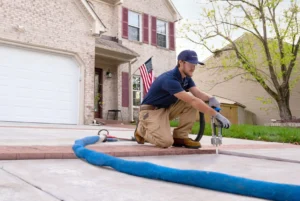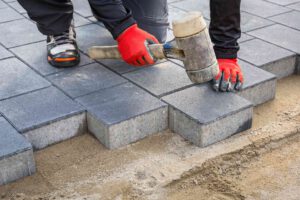Boat Lifts For Sale Near Me helps keep water vessels out of the water, preventing extensive deterioration. It also helps reduce costly repairs and saves upkeep time.
The type of lift you choose depends on where you live and how often you use your boat. Rough locations require a heavy-duty lift, so look for one with thicker arms, mechanisms, and bolts.

Several factors need to be considered when deciding which boat lift is right for you. You should consider where you will store your boat, what type of weather it is likely to receive, and the overall weight of your vessel. Choosing the right lift will protect your investment and help you keep it safe from avoidable damage.
A conventional four-post lift is a great choice for many situations. It is a durable, economical option for commercial and recreational use. It is also easy to maintain and is suitable for various vehicle types. Depending on the application, you can choose various accessories to enhance your lift’s functionality. These include rear wheel slip plates, a single-point latch release system, and an alignment rack.
Another good option is a cantilever lift. This lift type is ideal for inland lakes and rivers with low currents. It has a simple setup and is easy to maintain. It can also be used when piers are not built due to limited waterfront space. However, this lift cannot stand up to strong winds and waves.
The last option is a hydraulic lift. This is the type of lift you’ll see on many homes on lakes and rivers. It’s a fast-lifting lift that requires less maintenance than other options. It’s best suited for medium-sized vessels, which can lift 60,000 pounds.
When choosing a boat lift, it’s important to consider your vessel’s location and your family’s needs. A boat lift can be a great investment for your boat, but you’ll need to ensure it’s designed and built to fit the hull of your vessel. Getting the right lift will help you avoid costly repairs and save time. It’s always a good idea to consult your local dealer for more information and recommendations. They can guide you through selecting a boat lift that’s perfect for you.
If you own a boat, you know the importance of protecting it from damage. A boat lift can help protect your vessel from the sun, wind, and rain and prevent it from becoming a theft target. In addition, it can eliminate the need to tether your boat to your dock with lines and bumpers, which can be a tripping hazard. Furthermore, a boat lift can prevent unnecessary corrosion and algae growth on your dock.
A floating lift uses air to support the weight of your watercraft. Unlike traditional dock lifts, which use hydraulic power, this lift is powered by air. A polymer tank is connected to the boat lift cradle, and air is pumped in or out depending on whether you want to raise or lower your boat.
These lifts are available in various sizes and capacities to accommodate different types of boats. They can also be customized for your unique water conditions and dock configuration. Some even have the option for solar power, making them a green choice for environmentally conscious boat owners.
Another benefit of a floating lift is that it is easy to install and remove, making it an ideal solution for seasonal boaters who need to keep the changing weather conditions in mind. Additionally, they can be installed in areas where piles cannot, which makes them an excellent option for beachfront property.
Before using a floating lift, ensure it can support your boat’s weight. Every lift has a recommended weight capacity; following these limits is important. If you exceed the lift’s capacity, you may damage it. Moreover, it is essential to use a lift that has a safety switch to ensure your safety.
Covering your boat with a canopy or tarp is a good way to protect it while on the lift. A canopy is a great way to protect your boat from precipitation, sunlight, and birds. It’s also a great way to discourage would-be thieves, who will find it much harder to steal your boat with a canopy covering it.
The boat lift is a great way to keep your boat out of the water and protect it from bad weather. It also makes it easier to use and maintain your vessel. Choosing the right lift for your boat depends on its usage, water environment, and other factors. You can choose between two types of lifts: Cantilever and Vertical. Both are designed for different purposes but have advantages and disadvantages.
Cantilever lifts are simple to set up and easy to maintain, but they don’t get your boat very high out of the water. Moreover, they need to be stronger to handle the leverage of the ship. They work well in inland lakes and rivers but can’t withstand strong winds or currents.
Alternatively, you can opt for a hydraulic lift. They are built with steel tubes and pistons that power the boat up and down on the lift. They don’t require pilings to anchor the lift, so they work well in many locations. However, they don’t have the same stability as other lifts, so you might need to add extra bracing to your dock if you use a hydraulic boat lift.
Consider a vertical lift if you’re looking for a more stable lift suited to rough conditions. These lifts are more expensive than cantilever lifts, but they provide more stability and support to your vessel. They also don’t require as much space and are better suited for fluctuating water depths and rough waters.
Another option is a floating lift, which uses a platform to hold the boat and is less prone to damage and algae growth. These lifts are usually used for boats with a lot of freeboard and can float in saltwater, making them more suitable for coastal areas. They are also easy to install and work well with existing docks.
Another advantage of a Floating lift is that it doesn’t require a pier, which can be costly. However, they are more sturdy than cantilevers and hydraulic lifts and may be prone to damage.
A vertical platform lift is a motorized device that elevates a wheelchair or scooter user to overcome barriers such as stairs. They can be installed in residential and commercial settings and come in open or enclosed models. Some are designed to be a cost-effective alternative to elevators inside a hoistway.
A typical vertical lift consists of a tower or drive mast, a platform, a landing gate or door, and a battery. Some also have a folding ramp to assist in getting on and off the lift. Depending on the model and installation, there may be additional safety features such as obstruction sensors, grab bars, call-send controls on the platform or COP (car operating panel), and a safety brake to stop the lift in an emergency.
When deciding on the best vertical lift type for you, working with a dealer who can help you understand all your options is important. This will ensure that you get the lift with all the features you need and that it is code-compliant. Some additional things to consider when buying a vertical lift include the space you have, the location where you plan to install it, and whether you prefer an open or closed system.
If you prefer a more modern look, choose an open vertical lift. These systems can be installed directly on the floor or in a pit (check your local codes – pit-mounted open vertical lifts are not permissible everywhere). They have two lifting heights and four different enter/exit configurations and are available in various platform sizes.
Closed vertical lifts are a great option for homes and some small businesses. They offer the same functionality as open models but are more aesthetically pleasing. They can be made in various materials to match your home’s decor and feature clear Plexi walls for visibility. They can be used indoors or outdoors and are ideal for patios, porches, and decks. An electric motor, a hydraulic ram, or a combination can power them.


